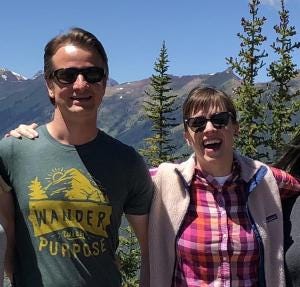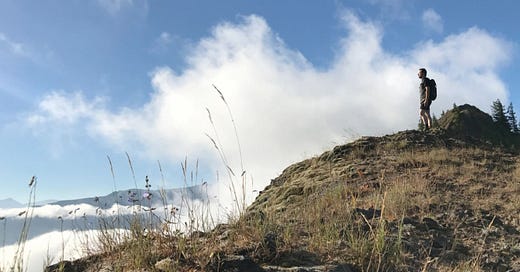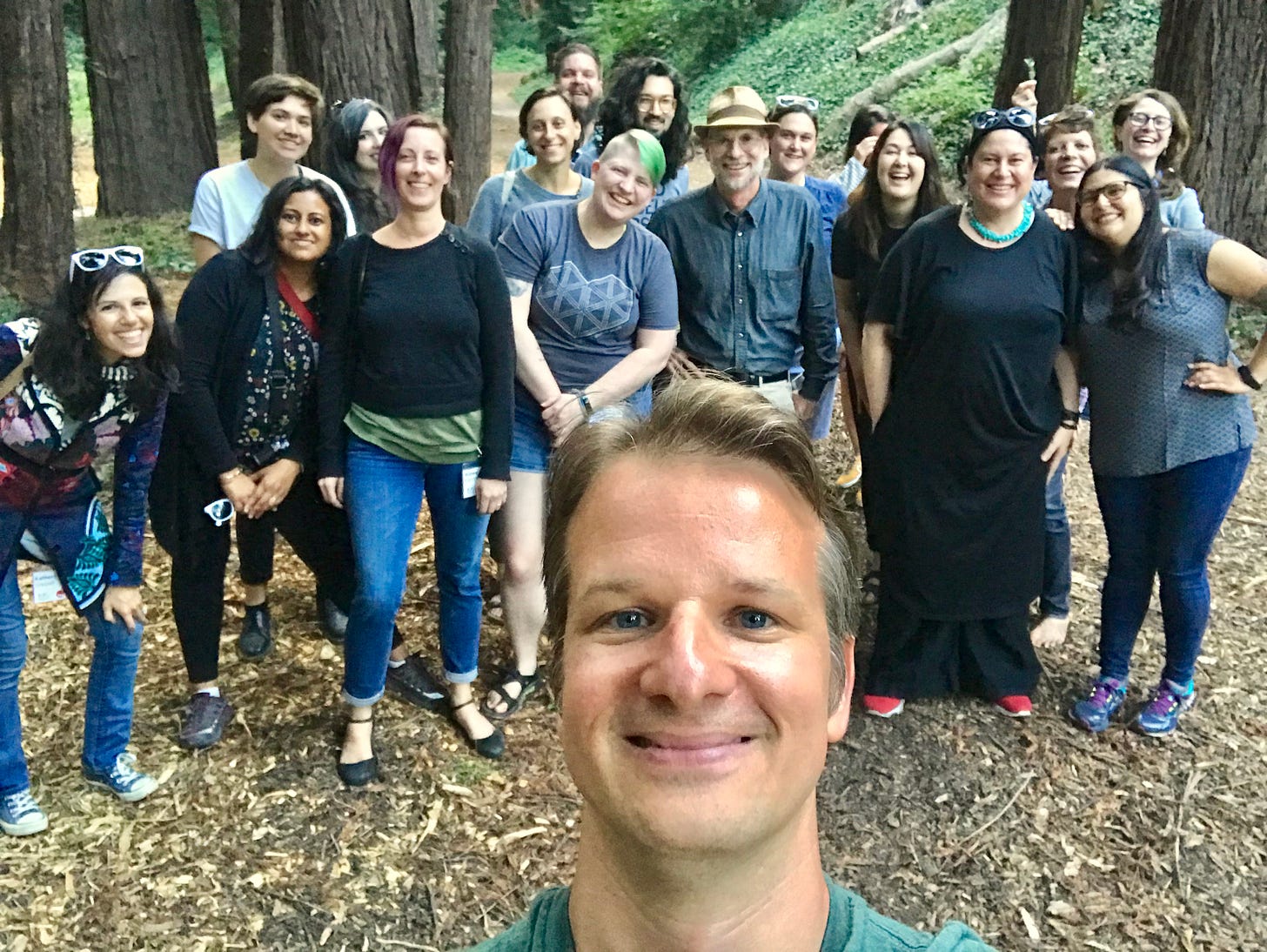Self-Care and Nature: An Interview
There is a lot nature can teach us, if we're paying attention
Hey there changemakers!
For the past month or so, I have been talking about the role that self-care can have in our change practices. The reason for this, simply put, is because change is hard.
Whether you are the only agent of change working in your institution, or part of a growing community of changemakers, it is absolutely vital to develop a practice of healing and self-care that can sustain you.
While I know self-care can seem like a “touchy-feely” subject for many, developing our own practice of healing and care is an essential way for us to give attention to the personal, emotional, physical, and spiritual effects on those fighting for change within institutions.
It can also be a vital tool for healing for those of us experiencing the fallout from the past two years—as I myself explored in my recent post reflecting on my layoff, “It’s Been Two Years Since…”.
Disentangling our identities from our work requires a kinds of exploration of self that can be nurtured in part through the peace and joy of simpler things (check out this new amazing #IAmNotMyJob zine created by Jamie Hagan and Margaret Middleton).
While there are lots of ways to develop a self-care practice, as you’ve probably learned by now, one of the most beneficial practices for me has involved developing a practice of connecting with the natural world.
Many people have lost a deeper connection and relationship with the natural world at the very same time that our actions are taking a toll on the natural ecosystems around us. We just simply don’t connect with nature in a slow and intimate way any more.
Yet immersing ourselves in the natural environment can be one of the most powerful and effective strategies for self-care and healing because it rebuilds and fosters a deeper connection between ourselves and the natural world. And this connection with nature makes us more fully human and more fully ourselves.
Restoring Our Connection with Nature
In the summer of 2018, I led a workshop workshop at Museum Camp in Santa Cruz that explored these very ideas, with a focus, specifically, on forest bathing and its wellness benefits.
Forest bathing is an approach to nature connection, founded in Japan, that prioritizes slowing down and experiencing the outdoors through all of your senses.
It is part of a broader, growing movement focused on the ways that nature provides restorative benefits that can help us reduce stress, think more clearly, lower our blood pressure, and more.
I talked more about this practice—as well as my experiences in nature, its restorative benefits, and what we can learn from reconnecting with the natural world—in an interview for the Museum Education Roundtable blog in the autumn of 2018 with Michelle Dezember, who at the time was Chief Program Officer of the Aspen Art Museum.
What follows is a re-post of this original interview.
INTERVIEW: Self Care and Nature with Mike Murawski
Michelle Dezember: Which came first, your love of museums or your love of nature? How do you see these as related?
Mike Murawski: I grew up in St. Louis with my back yard right up next to Laumeier Sculpture Park, so my play in nature as a child also involved sculptures and art. I don’t remember visiting a museum until eighth grade, and so my first real experience with art was outdoors in more uncontrolled, wild spaces where I could run around, unsupervised and certainly not quiet.
Maybe as a result, my work within museums has not always accepted the structures of organizational culture that restrict our experiences with art and make them feel like they have to be quiet, untouchable, or clean instead of messy.
I do think that something happened for me at the sculpture park as a child that ties together my love of nature and my love of art. It all goes back to me loving being out in open play.
Michelle: A “wild space” is in direct contrast with the “white cube,” isn’t it? Even though you and I might not change museums architecturally, we can certainly engender a wild space through our teaching and programming.
I think that happens when we immerse ourselves into that space with deep curiosity. This makes me think about the idea of “forest bathing,” which you introduced me to. Can you talk about what this is and what impact it has on your life and work?
Mike: Across the long history of the human species, we’ve only been sitting at a desk, in front of a screen, walking on pavement, hearing industrial sounds of machines, or even wearing shoes for a tiny fraction of that time.
When was the last time you were somewhere that you couldn’t hear the sounds of the human-made world? I honestly can’t remember, because even when you’re in the middle of a national park you might still hear an airplane fly overhead. We just simply don’t connect with nature in slow and intimate ways any more, but a desire for that connection is ingrained in our DNA.
Forest bathing allows us to have an experience where we take in nature through our senses, not on a hike or anything, but through a slow, immersive, meditative experiences. There’s a lot of interesting research that has been done in the last several years about the positive impact of being in nature on our health and physical well-being. Forest bathing actually even taps into our spiritual well-being and how we identify our whole self by seeing nature as a core part or our being and origin.
This summer, I led a brief forest bathing experience at MuseumCamp at the Santa Cruz Museum of Art & History. We gathered in a nearby park and shared a series of meditative, yoga-like experiences that allowed us to be present in the moment and connect with the forest through all of our senses.
Going on a hike is about ‘getting there’ but forest bathing is about ‘being here’ and taking in the moment, in the place we are in.
It can happen in backyards, parks, gardens, anywhere there is some greenery. At the Sustain retreat you hosted at the Aspen Art Museum, we took our shoes off during one of the sessions, and then we did a walking meditation as part of another experience. We should all do that more often, because there’s something in our DNA that responds positively to opening ourselves up to that kind of connection with nature and the world around us.

Back to your question about what we can learn from this connection to nature that could be applied to our work—I think it all starts with slowing down.
Through much of the equity, inclusion, and accessibility work we’re doing at the Portland Art Museum, we frequently talk about how much we could achieve if we slow down and trust the process. What’s the worst that can happen if we don’t prioritize the same pace of deadlines and work flow, and we take the time to be in the moment and have the difficult and important conversations we need to be having (but often don’t take the time)?
The other thing that has been important to me is tactile, physical engagement with things. How many times have you gone on a hike and maybe not touched anything?
We have an idea that getting dirty is bad, but in Santa Cruz I asked people to take their shoes off in the dirt (totally inspired by our walking meditation in Aspen). I invited people to rub the dirt in their hands, smell it, and let your body reconnect with what surrounds us.
So often the white cube doesn’t invite that tactile engagement, but as educators we can open up a whole new range of experiences. We’re inviting a much closer relationship with objects and people when we engage in all of our senses, not just sight.
Michelle: You touched on the spirituality of experiences with nature. It seems that feeling humbled or part of something bigger might happen most easily in immersive experiences that disconnect us from our routine. What can people who don’t have easy access to expansive public lands do?
Mike: Living in the Pacific Northwest, I definitely have the privilege of living close to incredible old growth forests, and it’s part of the culture and identity of this place. It’s certainly not like that everywhere.
Yet everyone has some sort of green space nearby. Botanical gardens or nearby parks are amazing places to visit and unplug. Go back to a place to watch how it changes through the seasons.
One of the exercises in forest bathing is to think of a memory of a tree from your childhood, maybe one you would climb or build forts around. It shows us that all we need is one tree to form a connection. Visit a tree and make a leaf collection, draw some of the leaves, wonder how long that tree has been there, and think about the story it has to tell.
Or, can you take your meetings outdoors for a walk around the block? All of these gestures ground us in the moment and provide us with the sense of connection needed to be present.
Michelle: Which is so important! Right now is autumn, which I love for the reminder to embrace change. What symbolism does autumn have for you?
Mike: Autumn has traditionally been the time of things fading, or leaves falling off the trees. But in Portland, the summer is so dry that everything turns brown. When it starts raining in the fall, life comes back with green moss and mushrooms. Re-growth is the best way to describe it. It’s very restorative and powerful.
We had a bad wildfire last year outside of Portland that burned 50,000 acres, including many popular hiking trails. Just a couple of weeks ago, my partner [Bryna Campbell] and I took our first hike through the area since it has started to re-open.
To walk through the forest and see the scarring of burn marks on the trees and then bright green ferns and moss growing all around them – that reminded me that nature can come back after terrible devastation with new life.
There’s a resilience that nature can teach us, if we are paying attention. There is a gift that comes from dramatic change.
Things will grow back, and often even stronger.
Want to learn more about how to build a closer connection to nature in your self-care practice?
There is one spot left in the May 24 workshop, Nature As Self Care: A Restorative Hands-On Workshop, that I am co-leading with my Super Nature Adventures co-creator and partner, Bryna Campbell.
If you are interested in joining us, you can get your tickets through this link.
Note: A recording will be provided for everyone who signs up, as well as a designed and illustrated resource guide with activity prompts.
If you try to sign up and the event is sold out, please add your name to this waitlist.
We are currently looking at our June calendars for a possible second date for this event, and we'll let those on the waitlist know first if spaces open up or if we add another date to this event.
****************
More ways you can work with me:
Email me for one-on-one Change mentorship and coaching sessions
Invite me to give a workshop or talk at your university, museum, or organization
Use our work with us form at Super Nature Adventures to contact us about a creative project idea on environmental education and/or place-based learning.
Thanks again, and please share this post if you like it.







